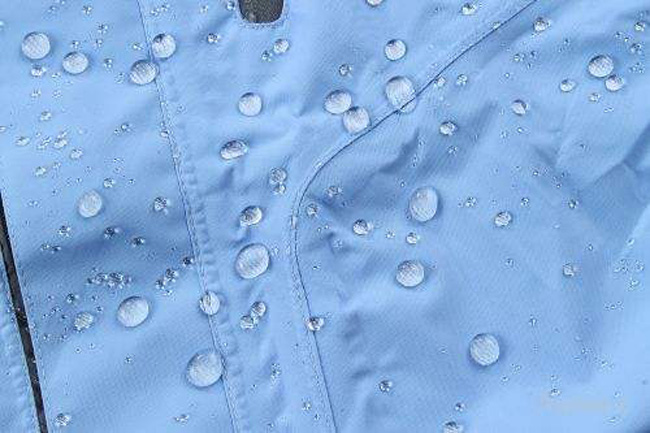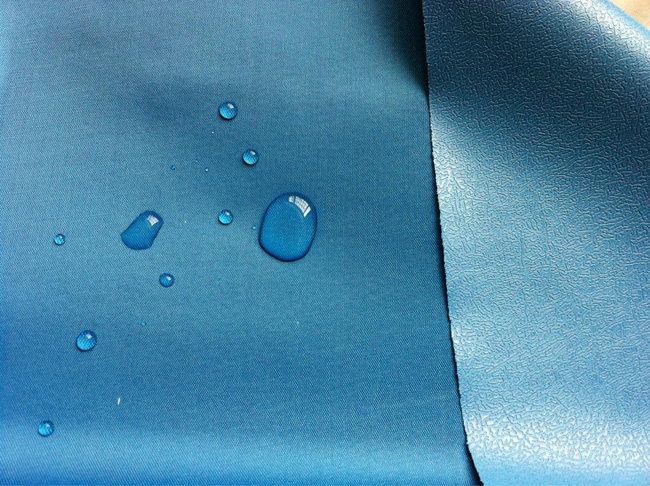Common quality problems and solutions in mechanical and electrical installation professionals
(1) Scope of construction mechanical and electrical installation projects
Mainly include: domestic water supply, drainage, fire protection, ventilation and air conditioning, smoke prevention and exhaust, heating, gas, strong electricity, weak electricity and other systems.
(2) Specifications and strong points for the installation and execution of construction process equipment
GB 50242-2002 “Construction Quality Acceptance Code for Building Water Supply, Drainage and Heating Engineering”, 20 mandatory provisions.
GB 50243-2016 “Code for Construction Quality Acceptance of Ventilation and Air Conditioning Engineering” (all), 10 mandatory provisions (original 2002 version 14 mandatory provisions).
GB 50261-2017 Specifications for construction and acceptance of automatic sprinkler systems, 6 mandatory provisions.
GB 50263-2007 Specifications for Construction and Acceptance of Gas Fire Extinguishing Systems, 11 mandatory provisions.
GB 50498-2009 Specifications for Construction and Acceptance of Fixed Fire Monitor Fire Extinguishing Systems, 12 mandatory provisions.
GB 50591-2010 Clean room construction and acceptance specifications (with explanations), 8 mandatory provisions.
GB 50411-2007 Construction Quality Acceptance Code for Building Energy-saving Projects, 7 of the 20 strong bars involve installation.
GB50974-2014 Technical specifications for fire water supply and fire hydrant systems, 41 strong bars.
(3) Branch projects involved
According to GB50300: there are 10 divisions of construction projects, including 103 sub-divisions, of which 68 are installed. (Foundation and Foundation 10
Sub-divisions; 7 sub-divisions for main structure; 12 sub-divisions for building decoration; 5 sub-divisions for roofing; 15 sub-divisions for building water supply, drainage and heating; 20 sub-divisions for ventilation and air conditioning; 7 sub-divisions for building electrical; and 19 sub-divisions for intelligent buildings. Department; 5 sub-segments for building energy conservation (4 for installation); 3 sub-segments for elevators)
2. Common quality problems in electromechanical installation projects
(1) Equipment installation
Including: various types of fans, pumps, refrigeration machines, air conditioning units, water tanks, pressure tanks, etc.
1. Common problems:
——The inlet and outlet pipes lack brackets, and the weight directly presses on the equipment.
——The water pump and fan are not equipped with shock absorbers; the vertical water pump uses spring shock absorbers; the shock absorber base uses spring shock absorbers, but there is no limit device to prevent horizontal movement; (S is the abbreviation of Spring, which stands for spring shock absorber. There are two types of shock absorption: rubber shock absorption (R) and spring shock absorption (S));
——The water pump safety device is incomplete and there is leakage;
——Cold water pumps and heat exchangers are not kept cold, condensation occurs, and some freeze;
——The drainage channel around the water pump is not installed, or the diameter of the hidden drainage outlet is too small and there is no filter;
——The equipment anchor bolts are exposed too long without protective measures, causing corrosion.
——The overflow pipe and breathing pipe of the domestic water tank are not equipped with insect-proof nets, and the overflow port is too close to the sewage pipe;
——The height and position of rows of equipment of the same model are inconsistent, and the wiring directions are inconsistent;
——The cylinder, water distributor, etc. are installed and fixed incorrectly, and the sliding end cannot move;
(2) Pipeline installation
Including: domestic water supply and drainage pipes, rainwater and sewage pipes, fire protection pipes, hospital pneumatic transmission pipes, oxygen pipes, air pipes, gas pipes, air conditioning water pipes, ventilation and air conditioning pipes, smoke prevention and exhaust pipes, etc.

1. Pipeline layout issues:
——The layout of rows of pipelines is not uniform, and the height and direction of valves and instruments are inconsistent and unsightly.
——The professional layout of pipelines, structure, decoration, electrical and other areas does not meet the specifications, and the upper, lower, left, and right positions and spacing are not handled properly
——Pipe fights, crossovers (hot water), soft and hard collisions, and even failure to maintain heat;
——The pipelines in the pipe well are not neatly arranged and the layout is messy, making it inconvenient for personnel to enter and operate;
——There is cross-contamination between pipelines and building walls;
——Water accumulates in the valve well, and there is no ladder to climb up and down; the height of the fire pump adapter does not meet the requirements, and the distance from the building is not sufficient;
——Pipelines and valves are at inappropriate heights, half-lit and half-dark, and partially buried in the foundation or ground, inconvenient for maintenance;
2. Pipe support installation issues:
——The bracket is cut with oxyacetylene, the cross section is not processed, and the bolt holes are cut with gas welding or electric welding, not mechanical drilling;
——The distance between the brackets is too large, the cross-section of the material is small, the strength is not enough, and there is deformation;
——The brackets for the same pipe are not uniform in form, rough in workmanship, and inconsistent in installation direction. Rows of pipes do not use common brackets;
——The rust removal of the bracket is not in place, the welding coating is not polished, the paint is uneven, and the rust is serious.
——There are no isolation pads on stainless steel pipes, air ducts and carbon steel brackets; there are no rubber pads or plastic sleeves on plastic pipe brackets;
——For pipes with heat insulation layer, there is no pipe support at the pipe pier or bracket, or the height of the pipe support is not enough, or the welding and fixing position is incorrect.
——The air ducts and fire ducts are not equipped with anti-sway brackets or are far away from each other;

3. Pipeline installation and laying issues:
——The clear distance between the pipe circumferential weld and the bracket, and the distance between two adjacent circumferential welds in the straight pipe section is small;
——The pipe welds are poorly formed, the welds of the stainless steel pipes are misaligned, and the stainless steel pipe welds are not pickled;
——The pipe and the bracket are spot welded together, which affects the expansion and contraction of the pipe;
——When pipes are connected with threaded threads, the threaded threadsWhen using fire hoses and fire extinguishers, the height from the bottom is 380mm).
4. Pay attention to the installation of fire water pumps:
——Water inlet and outlet pipes: It should be ensured that the effective volume of the fire pool can be fully utilized; the water pump should be self-priming and absorb water, and there should be no less than two water suction pipes;
——The suction inlet of the fire water pump should use a butterfly valve with a reliable locking device, and wafer-type valves are not allowed);
——The suction pipe of the fire water pump must not have an inverted slope. The pipe diameter should be reduced by using an eccentric reducer, and the top of the pipe should be connected flat.
——The vibration damping device of the vertical water pump should not use spring dampers.
5. Attention should be paid to the installation of fire sprinklers
——Pay attention to the starting temperature and do not install it incorrectly. (Orange 57℃, red 68℃, yellow 79℃, green 93℃, blue 141℃, purple 182℃, black 227℃)
——Pay attention to the parts where a heat collecting cover (heat collecting plate) needs to be added:
When there are holes or gaps above the fire sprinkler head, a heat collecting cover should be installed above the sprinkler head:
a. Additional sprinkler heads under the underground garage beam (when the width of the beam is less than 360mm));
b. If the installation height of the sprinkler head exceeds 5 meters, a heat collecting cover needs to be installed.
c. A heat collecting cover must be installed in all places where the downspray is not suspended from the ceiling (including pipe row downspray).
d. When the distance between the installation position of the fire sprinkler head and the roof is greater than 30cm, a heat collecting cover should be installed.
——No need to add a heat collecting cover: if the upward spray sprinkler head is close to the floor, there is no need to add a heat collecting cover; the sprinkler head installed under the air duct does not need to add a heat collecting cover; (the size of the circular diameter is not less than 400mm, Square side length is not less than 350mm)
——Pay attention to the arrangement of sprinkler heads: the block ceiling should be arranged in the center, and the concealed sprinkler heads should be closely attached to the ceiling. (Upper spraying is used in places without suspended ceilings, and downward spraying is used in places with suspended ceilings). The distance between the sprinkler head and the wall should be no less than 300mm and no more than 1.8 meters;
——Up and down spray settings. When the distance between the sprinkler head and the suspended ceiling is greater than 800mm, and there are combustible materials in the suspended ceiling, up and down spraying must be used; (if both are met: a. The distribution lines in the stuffy ceiling use non-combustible material casings or closed metal trunking; b. Air ducts Insulation materials, etc. are made of non-combustible and flame-retardant materials; c. No other combustibles).
——Down spray settings: When the width of beams, air ducts, pipe rows, and bridges is greater than 1.2m, additional sprinklers should be installed under their ventral surfaces.

6. Pay attention to the anti-sway bracket settings (water spray and gas fire extinguishing are different):
——Automatic sprinkler system: For water distribution main pipes or water distribution pipes with a diameter of 50 mm or greater, each section should have no less than one anti-sway bracket, and the spacing should not exceed 15m; anti-sway brackets should be added when the pipe changes direction.
——Gas fire extinguishing system: The end of the pipeline should be fixed with an anti-sway bracket, and the distance between the bracket and the end nozzle should not be greater than 500mm. For trunk pipes with DN ≥ 50 mm, at least one anti-sway bracket should be installed in the vertical and horizontal directions; when passing through building floors, one anti-sway bracket should be installed on each floor; when the horizontal pipe changes direction, an additional anti-sway bracket should be installed Anti-sway bracket.







